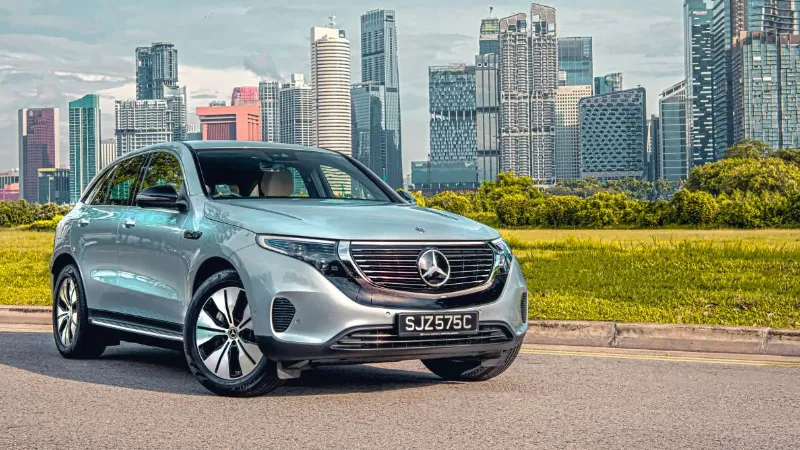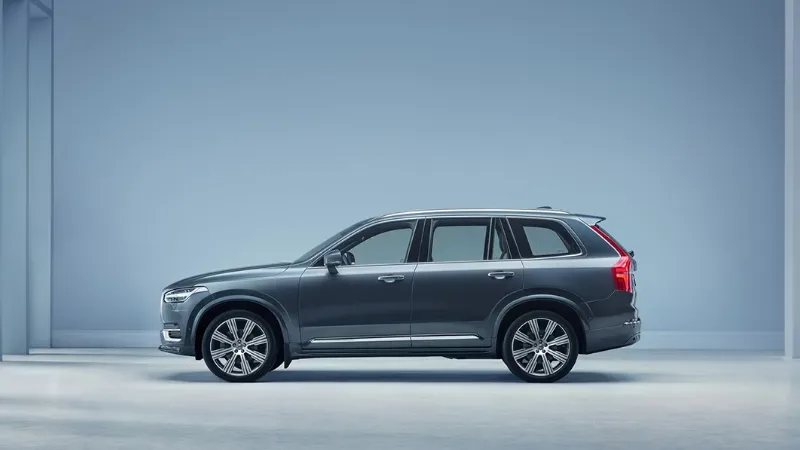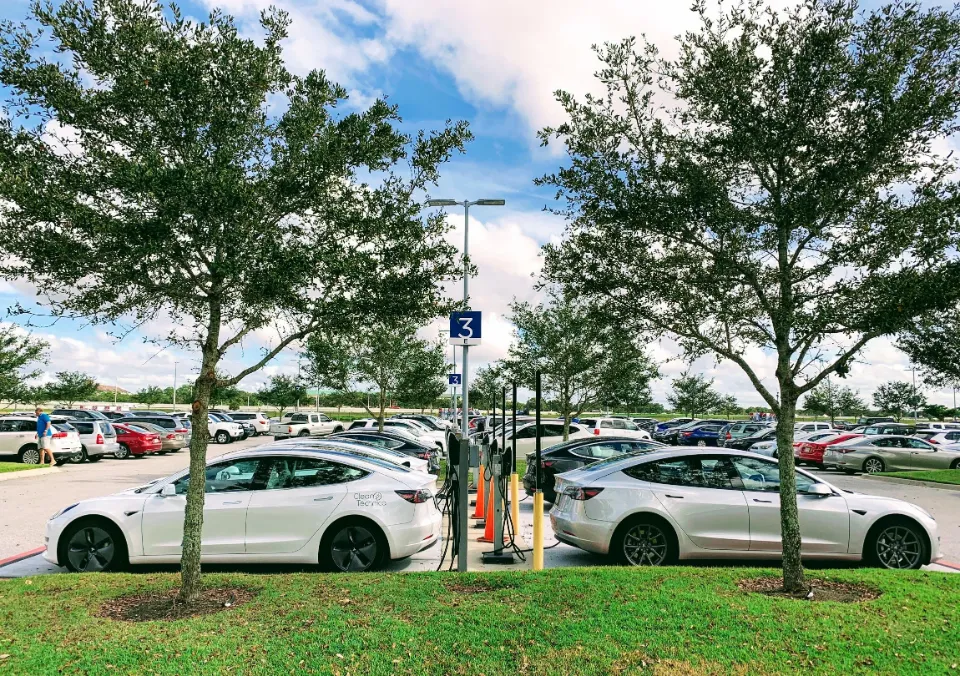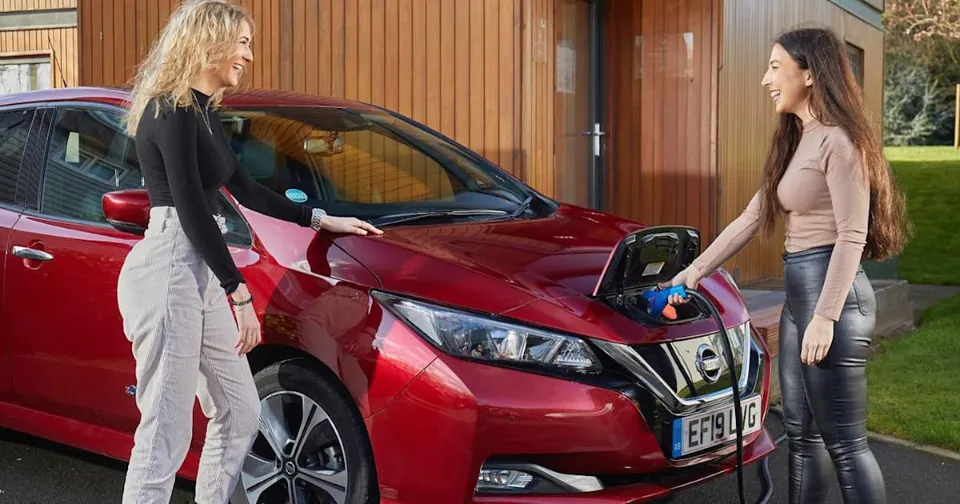Your suspicion is correct; the batteries in an electric car are not the same as those in a conventional, gas-powered car. EVs use lithium-ion batteries, which are somewhat similar to the battery you’ll find in your laptop, cellphone, and many other types of electronics—just a lot bigger and more complex. So, What Are Electric Car Batteries Made Of?
Electric car batteries are made of lithium-ion cells, and are even larger and heavier than the batteries in gas-powered vehicles; after all, they have to generate enough energy to move an entire car.
What is An Electric Car Battery Made Of?
Do not be concerned; this will not resemble a chemistry lesson from high school in any way. It’s important to remember that there are various types of electric car batteries that use a variety of metals and have various advantages and disadvantages.
Lithium-ion (Li-on), which is used by the majority of EV manufacturers (Mercedes, Jaguar, etc.), is one of the two main types of EV batteries.), and nickel-metal hydride (NiMH), which is employed by Toyota.
NiMH
NiMH batteries can withstand colder climates and are less expensive than Li-on batteries.
Prior to completely depleting their energy reserves, they have typically been vulnerable to a “memory effect” when charged. Since they will “remember” they were charged after a shorter time, they will use less power between charges than they would have in the past.
Li-on
The batteries in your phone and lithium-ion batteries have a lot in common. For quick charge cycles, lithium-ion batteries are used in the majority of modern smartphones. On a larger scale, EVs employ these.
Lithium-Nickel-Manganese-Cobalt-Oxide batteries, also known as NMC batteries, are the most widely used and have the highest energy density. Manufacturers like Tesla are increasingly utilizing alternative chemistries, such as the less efficient but more affordable lithium-iron-phosphate (LFP).
Lithium-ion batteries are being produced at a record rate to meet the demand for new electric cars due to their higher energy density compared to NiMH batteries.
EV lithium-ion battery packs, also referred to as NMC532s, are made up of 8 kg of lithium, 35 kg of nickel, 20 kg of manganese, and 14 kg of cobalt, according to statistics from the Argonne National Laboratory.
Reducing the amount of metals that need to be mined is a significant challenge for EV battery researchers because cobalt and nickel are pricey and environmentally harmful to obtain.

How Are the Batteries Made?
Three levels—cells, modules, and packs—can be distinguished in electric vehicle batteries. The battery in a BMW i3 has 96 cells. A module in this instance consists of 12 cells, and a battery pack consists of 8 modules.
A basic lithium ion battery, the battery cell has the ability to exert electric energy through charging and discharging. Battery cells come in cylindrical, prismatic and pouch varieties, though all have the same basic function (you can learn more about this in our post on how electric car batteries work)
The next step is to combine the battery cells in a frame (module) that shields them from outside shocks, heat, and vibration. The battery system installed in the electric vehicle takes its final form in the form of the battery pack. At the end of their life cycle, EV battery packs are typically glued and welded together, making them difficult to disassemble.
EV Battery Sources
As the world rushes to produce all-electric vehicles, governments all over the world are securing their own supply chains. The majority of lithium-ion battery packs for electric cars come from China.
These batteries currently consist of parts from a number of distinct nations. For example, the Democratic Republic of the Congo produces half of the world’s cobalt. Brazil, Australia, and Indonesia all have nickel deposits. Meanwhile, Chile, Bolivia, and Argentina account for 75% of the world’s lithium mining.
Automobile manufacturers and battery manufacturers are investing billions of dollars to lower manufacturing costs and develop new techniques for recycling EV batteries. Instead of mining for new materials, the objective is to create methods for recovering valuable metals from old batteries.
What Happens When the Battery is Dead?
When an electric car battery reaches the end of its useful life, it might no longer be the environmentally friendly substitute for gasoline or diesel that it once was.
In fact, an EV battery can release harmful toxins and heavy metals if it is disposed of in a landfill. Are EVs really better for the environment, you might be wondering.
The average lifespan of an electric vehicle (EV) battery is currently estimated to be between 10 and 20 years, or between 200,000 and 400,000 miles, before it needs to be replaced.
While that is more than sufficient for the average user, batteries for electric cars in the future may be able to travel even farther. The next major advancement in EV batteries, the “solid-state battery,” has the potential to significantly lessen lifetime battery degradation. Tesla has already announced its “million-mile battery.”
Until then, thankfully, there are other uses for used EV batteries that can no longer be used in vehicles.
How Reliable Are Electric Car Batteries?
Some of the most dependable automobiles on the road today include electric (and hybrid) models. Long warranties for EV batteries (typically eight years or 100,000 miles) that typically go beyond the overall manufacturer warranty for the car serve as support for this.
EV batteries do experience performance degradation over time and after numerous charge cycles, just like lithium-ion batteries used in consumer electronics, but this degradation is much less pronounced than in many other smaller electronic devices, such as smartphones. This is due to the fact that the number of charge cycles is significantly higher in these devices than in an EV, making it a much more significant factor in battery degradation than age.
There are steps you can take to protect the battery in your electric vehicle.
To extend the life of your battery, keep the charge level between 20% and 80%. Avoid constantly using DC rapid chargers as this can shorten battery life. See our article on the lifespan of EV batteries for more advice.

How Does the Battery Affect EV Range and Performance?
The ideal way to measure an EV’s power output is in kW (kilowatts), rather than horsepower. Kilowatt hours, or kWh, are used to measure the battery’s ability to store energy. This unit is similar to how many liters a typical car’s fuel tank can hold.
Since EV batteries are expensive, the most expensive cars frequently have the best performance and the greatest range. The smallest cars often have the lowest capacity batteries, and vice versa.
Electric Car Batteries: Own, Lease Or Swap?
The batteries come with a new electric car when you purchase it, unlike some Christmas toys. These ought to endure for the duration of the car. Previously, electric car battery leasing programs were available from Renault, Nissan, and Smart. These programs were designed to lower upfront costs and ease concerns about EV battery degradation. However, the idea was unpopular.5
When they were first released, battery lease options were offered for used electric vehicles like the Renault Fluence Z.E, Renault ZOE (2012-2019), Nissan LEAF (2013-2018, Flex model only), and Smart Fortwo Electric Drive (2009-2014). Drivers had to pay a monthly fee for the battery as a result, but this reduced the cost of the purchase.
Benefits included a performance guarantee, cost-effectiveness for drivers who log more miles, and a free battery replacement if capacity fell below the usual 70 percent charge-level guarantee. These models still cost less than comparable vehicles when purchased without their batteries on the used EV market.
Depending on the lease agreement, some EV battery leases had a mileage cap unless the driver paid extra for an unlimited option. Check to see if a used electric vehicle you are considering is a “battery owned” vehicle if you don’t want to enter into a battery lease.
A different approach to the problem of on-the-go charging and keeping up with rapidly evolving technology is battery swapping. Chinese automaker NIO, which recently opened its first European battery-swap station in Norway, is the innovator of the concept.
Read about How Fast Does Electricity Travel?
What is the Future for Electric Car Batteries?
The next big thing might be solid state EV batteries. Solid state EV batteries substitute a solid electrolyte for the liquid-based one, using a chemical reaction that is very similar to lithium-ion technology. This means that solid state electric car batteries can be smaller and lighter than traditional lithium-ion batteries. These benefits help increase energy density and reduce the battery weight.6
Solid state batteries should be more durable and capable of charging more quickly. Safety is improved, too.7
However, they are still technically demanding to manufacture, and much of the technology is still being researched, which means they could still be five years from production.8
While maximum ranges increase to 500 miles and beyond, the cost of electric car batteries will decline, driven by new lithium-iron phosphate technology. As more EVs become compatible with ultra-rapid chargers, charging speeds will also rise.
Conclusion
The electric vehicle (EV) revolution is not without issues, despite the much-hyped environmental advantages of these vehicles. EV battery material mining is frequently risky and environmentally damaging, but it is still frequently less expensive than recycling old EV batteries.
However, manufacturers are increasingly finding inventive ways to recycle old batteries, which could help stabilize the grid and guarantee a consistent supply of energy in our homes.
You can learn how much a new battery for an electric car will cost if your current one is nearing the end of its lifespan by reading this article.





